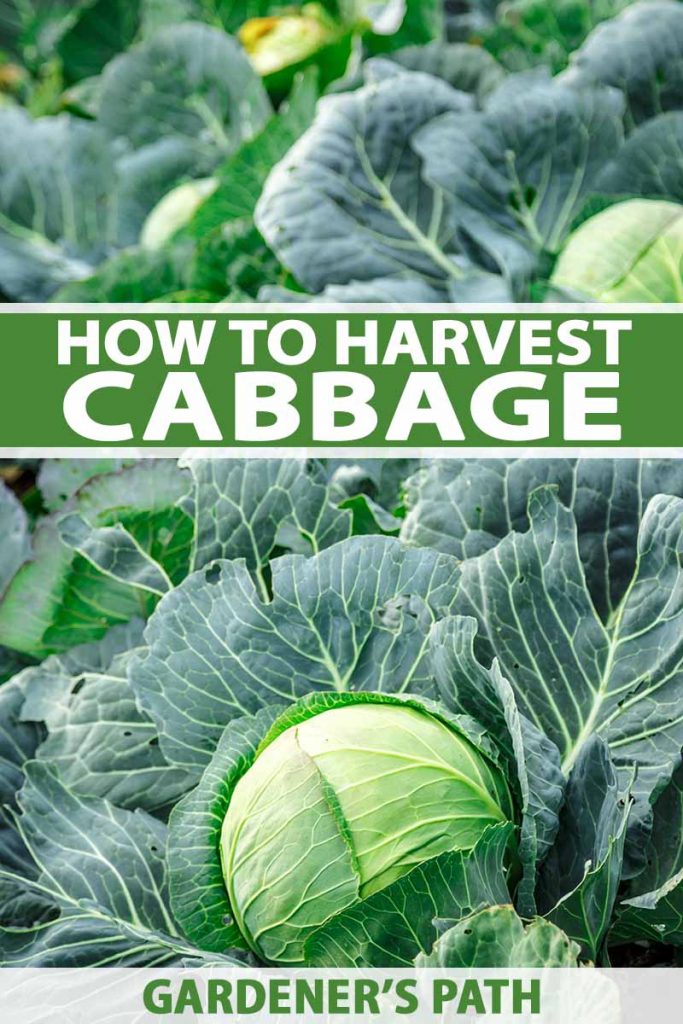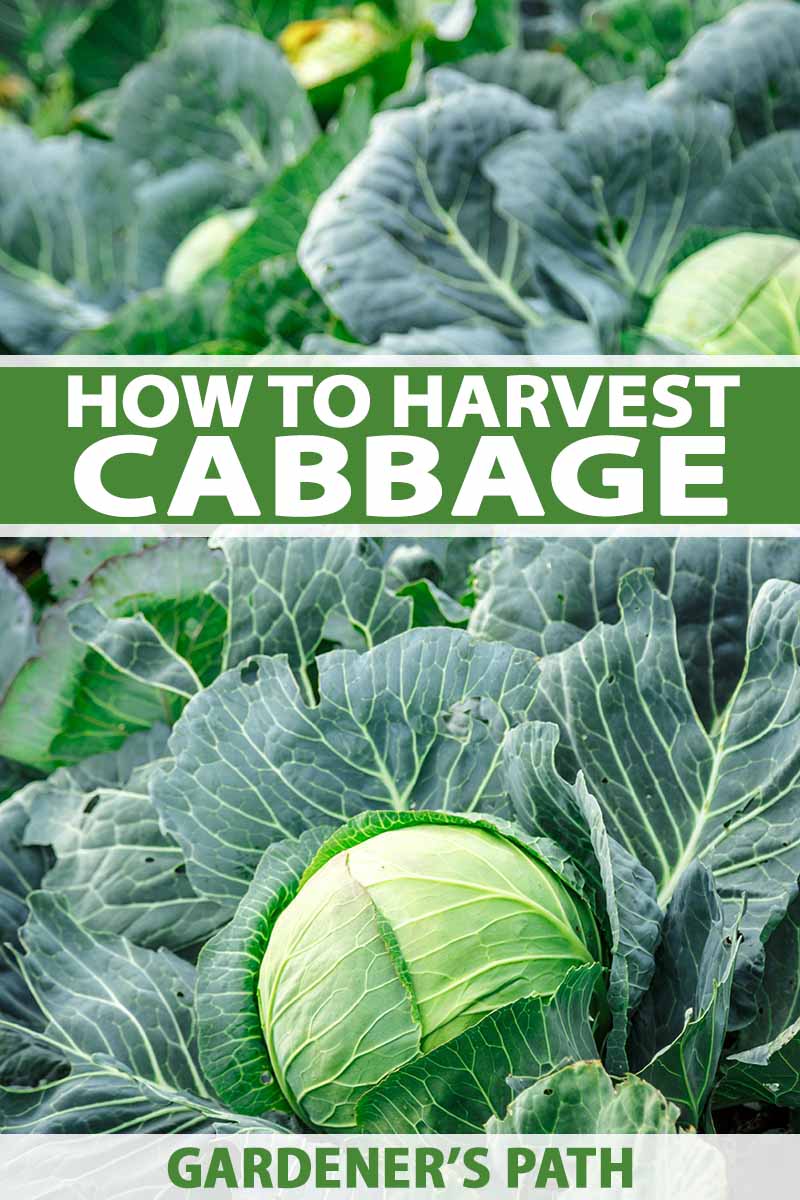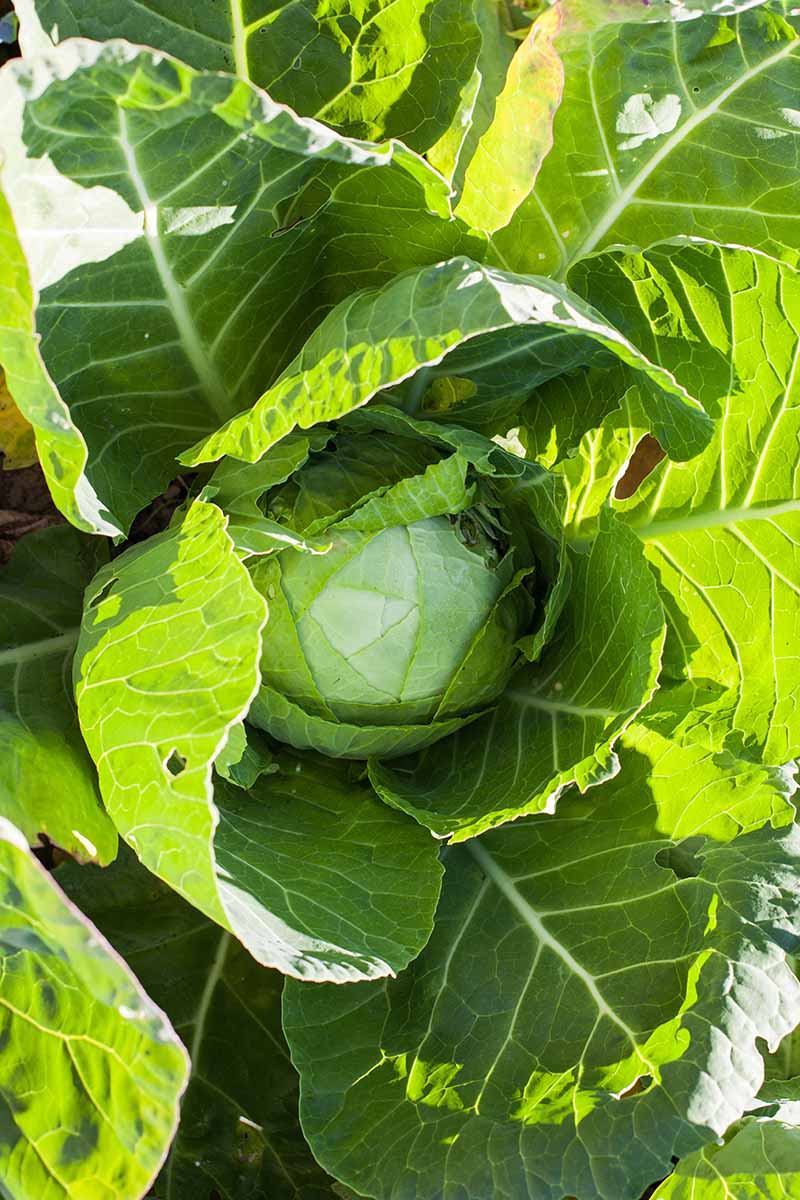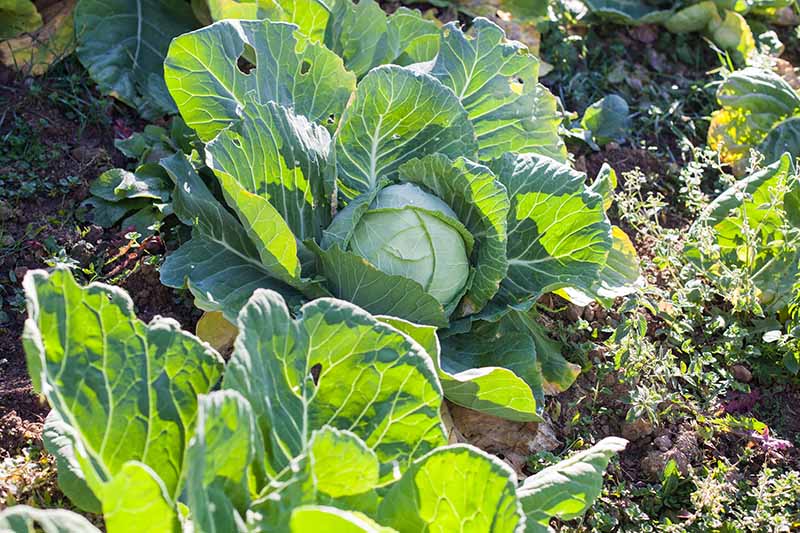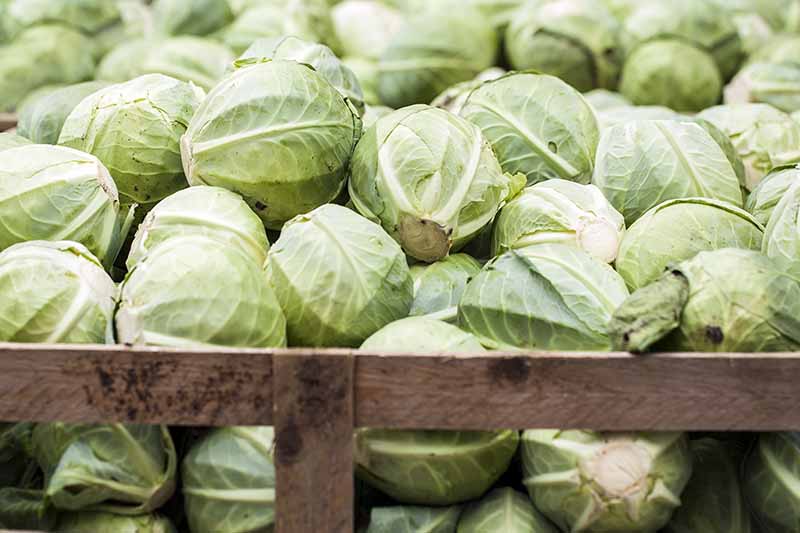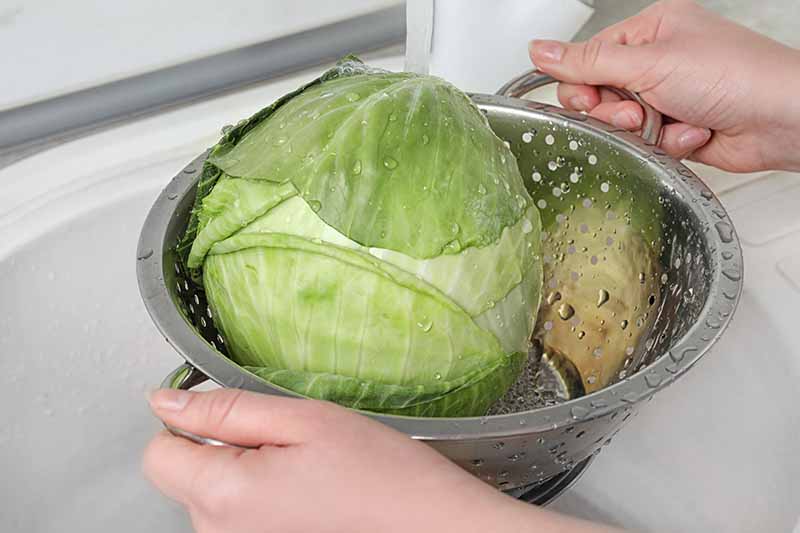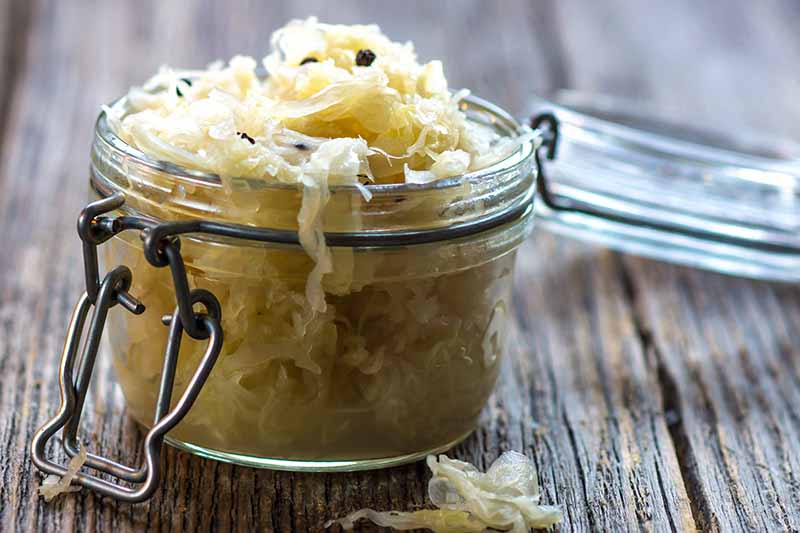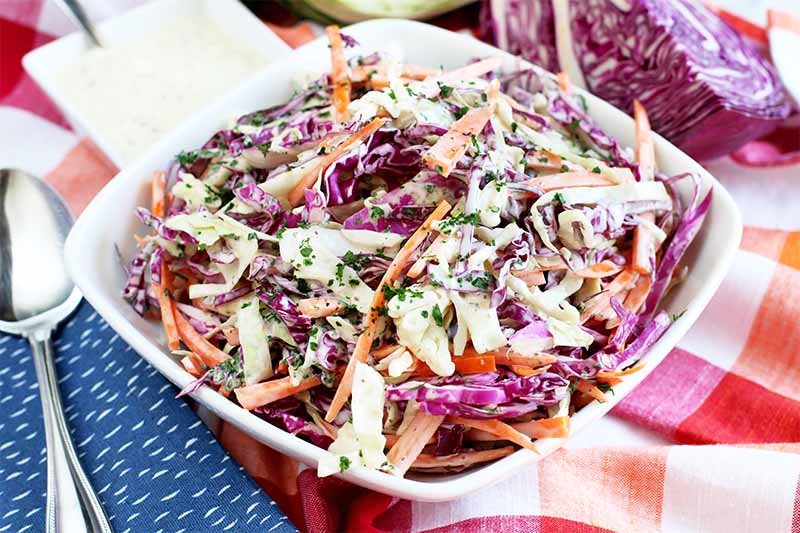They also held its perceived medicinal properties in high esteem, using it to treat gout and headaches. While cabbage remains an important utility player in our kitchens, it’s not exactly considered a luxury food item these days, though perhaps it should be. We link to vendors to help you find relevant products. If you buy from one of our links, we may earn a commission. If you’re growing this humble but flavorful vegetable in your garden, you might have questions about when and how to harvest. Let’s learn more!
When to Harvest
The first thing to determine, of course, is timing. Is it the right time to harvest your cabbages or should you give them a bit more time?
Determine this by first consulting the time to maturity for the variety you planted. Some cabbages are ready in as few as 80 days from seed and 60 days from transplanting, while others take as long as 180 days from seed or 105 days from transplanting. Start by knowing the approximate time to harvest, per each cultivar that you are growing. Next, step out into your garden patch. Take a deep breath and absorb Mother Nature’s perfection. Have a close look at your cabbages. Again, you’ll want to consult the seed packet information about your specific cultivar.
Some cabbages are ready when the head is compact and softball size, while others are mature when they’re closer to the size of a soccer ball – or even bigger, like that ball you sit on when you’re at work and eschew normal chairs for whatever reason. Okay, maybe not that big… Another consideration is how the head feels. Give it a squeeze. Is it firm, all the way through? If you still feel some softness, for most varieties, you should wait a bit. Another sign of harvest readiness is the beginnings of cracked leaves. Take a look at the leaves that are adhered tightly to the softball or soccer ball or what have you. If you see them starting to split apart, it’s time to harvest. Rain is another consideration. If you’re debating whether to give your vegetables a couple more days to grow, but you know that rain is in the forecast, it might be a good time to pull ‘em. Excessive rain or overwatering can split mature cabbage heads, making them inedible.
How to Harvest
Now, the fun part. Can you taste the fresh homemade slaw already? When it comes to harvesting cabbage, you have a couple of options. Whichever you choose, it’s best to do your cabbage pickin’ in the morning, before it gets too hot and the leaves wilt.
You can simply go in with your super-strong gloved hand, grab the base of a cabbage head, and pull with all your might. In loose soil, you’ll bring up the entire plant, root and all. You may find a little wrist twisting is required with this method. Another approach involves sharp implements and could result in a nursery full of baby cabbages. Using a very sharp knife or loppers, cut the cabbage head off, leaving a few inches of the stem and some of the large, floppy, worm-hole-ridden leaves intact – and leaving the root in the ground.
In gratitude for leaving a bit of itself behind, the cabbage plant will reward you with new life — in about two weeks, you’ll see the buds of new cabbages popping up to replace the mother plant. If numerous babies appear, cut some off to allow just two or three to flourish. None of these second-gen “side-heads” will be as large as the first one, but they will be every bit as edible, as long as they have time to continue growing before the season ends.
Preparation and Storage
Prepare the cut cabbage heads by first peeling or cutting away the large, loose leaves. Feed these to your backyard chickens or add them to the compost pile.
Put the cut heads in a shady spot, or take them into the house right away so they’re not baking in the sun. Inside, rest the cabbage heads on the kitchen counter until they’re dry, then wrap them in plastic and store in the refrigerator. They’ll generally keep for several weeks.
Preservation
If the thought of consuming 85 heads of cabbage in a few weeks’ time makes your stomach revolt, save some of your harvest for later! Freshly harvested cabbage should last 1-2 months in the refrigerator. It’s best kept unwashed in a porous bag and only washed when you are ready to use it.
There are various methods you can use for storing cabbage long-term.
Freeze
You can freeze cabbage if you take a few steps to properly prepare it. Begin by removing any yellowed leaves from the outside of the head. Then wash the head thoroughly. To dislodge any bugs that might be hiding out, soak the cabbage head in salt water for 30 minutes. Use 1 to 3 tablespoons of salt per gallon of water.
Cut the cleaned head into wedges, or separate the leaves. For best results, blanch the cabbage in boiling water for 90 seconds, and then plunge the bits into ice water. Blanching helps preserve nutrients that may be lost in the freezing process, and it helps the cabbage stay edible longer. Non-blanched, frozen cabbage will need to be used in four to eight weeks, whereas blanched, frozen cabbage will remain tasty for nine to 14 months.
Dehydrate
You can also dehydrate cabbage. Wash and slice it into thin strips, and arrange them on dehydrator trays. Dehydrate at 125-135°F for 7-11 hours. Check your dehydrator’s instructions for more specific recommendations. Store dehydrated cabbage in glass jars or in vacuum-sealed bags.
Fermentation
Another popular and healthy option is to preserve cabbage by fermenting it, making sauerkraut or kimchi.
The basic process of lactofermentation uses salt and water to create an environment where beneficial bacteria can thrive. These bacteria feed on the sugar in the cabbage and the resulting ferment is full of beneficial probiotic bacteria that will keep your gut healthy!
Recipes and Cooking Ideas
Now that you’ve harvested your cabbage, it’s time to enjoy it! Cabbage, of course, is the star ingredient of coleslaw, and we encourage you to try this classic recipe from our sister site, Foodal. Cabbage is also delicious in stir fries, and you might want to try Foodal’s Asian chicken cabbage stir-fry. Another option for dinner tonight: salmon tacos with tomatillo guacamole and red cabbage slaw, also from Foodal.
From Rome to Home
Humble or haughty, cabbage surely deserves a place in your garden and on your table. Now that you know when and how to harvest this Ancient Roman favorite, you should have no trouble satisfying the cruciferous needs of your family. Are you an expert cabbage picker? Do you have any tips to share with our readers? Share your thoughts in the comments section below. And if you’re very into cabbage check out these articles next:
How to Grow Winter Cabbage for a Late-Season Harvest Identify, Prevent, and Treat Common Cabbage Diseases How to Grow Savoy Cabbage How to Keep Slugs off Cabbage and Other Cole Crops
Photo by Meghan Yager © Ask the Experts, LLC. ALL RIGHTS RESERVED. See our TOS for more details. Originally published on November 23, 2019. [lastupdated]. Uncredited photos: Shutterstock. Additional writing and editing by Clare Groom and Allison Sidhu.
